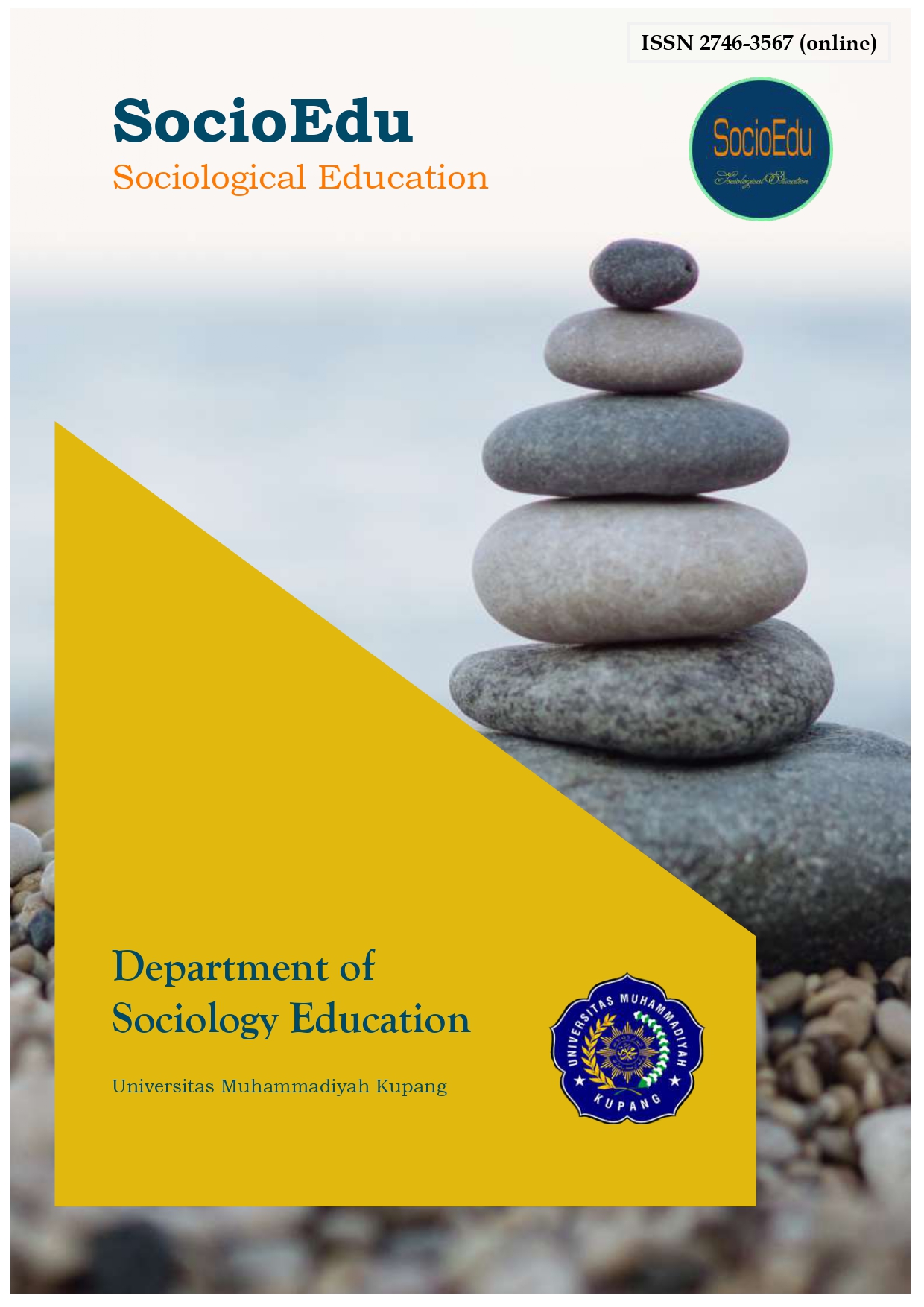Main Article Content
Abstract
This research aims to understand how the sociology learning process using digital learning media in high schools in Yogyakarta City. The article presents the proportion and variety of digital learning media used by teachers and students in sociology education. Data were collected using a quantitative approach. The data collection technique used was a questionnaire distributed to students, with data collected from 137 students in 3 high schools. The research results show that the sociology teaching process conducted by the teacher in the classroom combines the use of technology-based learning media. 94.9% of students stated that the teacher allowed the use of electronic devices in the learning process. As many as 98.5% of students stated that they use electronic devices to support the learning process. Various integrations of digital learning media in education, such as the use of laptops, smartphones, and the utilization of the internet to support and enrich learning materials. This is supported by 97.8% of students owning and using laptops, smartphones, and internet access, with a proportion of 0.7% bringing only laptops, 64.2% owning mobile phones, 0.7% bringing both mobile phones and tablets, and 31.4% bringing both laptops and mobile phones to school. Supporting materials are obtained from e-books, YouTube, and articles. The level of media usage by students is 76.6% using e-books, 69.3% accessing YouTube, 10.9% accessing articles, and 66.4% of students using media to understand the material through practice questions.
Keywords
Article Details

This work is licensed under a Creative Commons Attribution 4.0 International License.
References
- Agárdi, I., & Alt, M. A. (2024). Do digital natives use mobile payment differently than digital immigrants? A comparative study between generation X and Z. Electronic Commerce Research, 24(3), 1463–1490. https://doi.org/10.1007/s10660-022-09537-9
- APJII. (2024). APJII Jumlah Pengguna Internet Indonesia Tembus 221 Juta Orang. Https://Apjii.or.Id/Berita/d/Apjii-Jumlah-Pengguna-Internet-Indonesia-Tembus-221-Juta-Orang.
- Ciolan, L., Petrescu, A., Radulescu, C., & Bucur, C. (2014). Training Teachers to Use Digital Resources for the Knowledge Society. Pro-cedia - Social and Behavioral Sciences, 128, 415–419. https://doi.org/10.1016/j.sbspro.2014.03.180
- De Cremer, D., & Kasparov, G. (2022). The ethi-cal AI—paradox: why better technology needs more and not less human responsibil-ity. AI and Ethics, 2(1), 1–4. https://doi.org/10.1007/s43681-021-00075-y
- Donaldson, J. P., & Allen-Handy, A. (2023). What is learning? A complex conceptual systems analysis of conceptualizations of learning. International Journal of Educa-tional Research Open, 4, 100254. https://doi.org/10.1016/j.ijedro.2023.100254
- Gilbert, C. D., Sigman, M., & Crist, R. E. (2001). The Neural Basis of Perceptual Learning. Neuron, 31(5), 681–697. https://doi.org/10.1016/S0896-6273(01)00424-X
- Haleem, A., Javaid, M., Qadri, M. A., & Suman, R. (2022). Understanding the role of digital technologies in education: A review. Sus-tainable Operations and Computers, 3, 275–285. https://doi.org/10.1016/j.susoc.2022.05.004
- Hamalik, O. (2014). Psikologi Belajar dan Mengajar. Sinar Baru Algensindo.
- Hendrastomo, G., & Januarti, N. E. (2018). Eco-media Pembelajaran: Ragam Media Seder-hana untuk Pembelajaran Sosiologi. UNY Press.
- Hikam, F. (2020). Peran Keluarga dalam Pem-belajaran Berbasis E-learning pada Masa Wabah Covid-19. PANDAWA, 2(2). https://ejournal.stitpn.ac.id/index.php/pandawa/article/view/695
- Hikmah, D. (2019). Media For Language Teach-ing and Learning in Digital Era. Internation-al Journal of English Education and Lin-guistics (IJoEEL), 1(2), 36–41. https://doi.org/10.33650/ijoeel.v1i2.963
- Januarti, N. E. (2022). Kontradiksi E-Learning: Perubahan Relasi Intersubyektif Antara Guru Dan Siswa. https://doi.org/10.21831/socia.v19i1.50759
- Karimi, J., & Walter, Z. (2015). The Role of Dy-namic Capabilities in Responding to Digital Disruption: A Factor-Based Study of the Newspaper Industry. Journal of Manage-ment Information Systems, 32(1), 39–81. https://doi.org/10.1080/07421222.2015.1029380
- Laakso, N. L., Korhonen, T. S., & Hakkarainen, K. P. J. (2021). Developing students’ digital competences through collaborative game design. Computers & Education, 174, 104308. https://doi.org/10.1016/j.compedu.2021.104308
- Nur Fitria, T. (2022). Using Authentic Material and Created Material (Teacher-Made) for English Language Teaching (ELT): Benefits and Limitations. JADEs Journal of Academ-ia in English Education, 3(2), 117–140. https://doi.org/10.32505/jades.v3i2.4674
- Nurhalimah, D., & Azzahra, D. T. (2023). The Impact of Learning Media on Students’ De-velopment in Learning. International Jour-nal of Students Education, 1(2), 264–266.
- Okunev, R. (2023). History of the Internet, Search Engines, and More. In R. Okunev (Ed.), The Psychology of Evolving Technol-ogy: How Social Media, Influencer Culture and New Technologies are Altering Society (pp. 9–16). Apress. https://doi.org/10.1007/978-1-4842-8686-9_2
- Putri, I. A. (2024). The Influence Of Interactive Learning Media In Improving Students’ Critical Thinking Skills In Computer System Subjects Software Utilisation. Jurnal Ilmiah Mandala Education, 10(4), 811. https://doi.org/10.58258/jime.v10i4.7507
